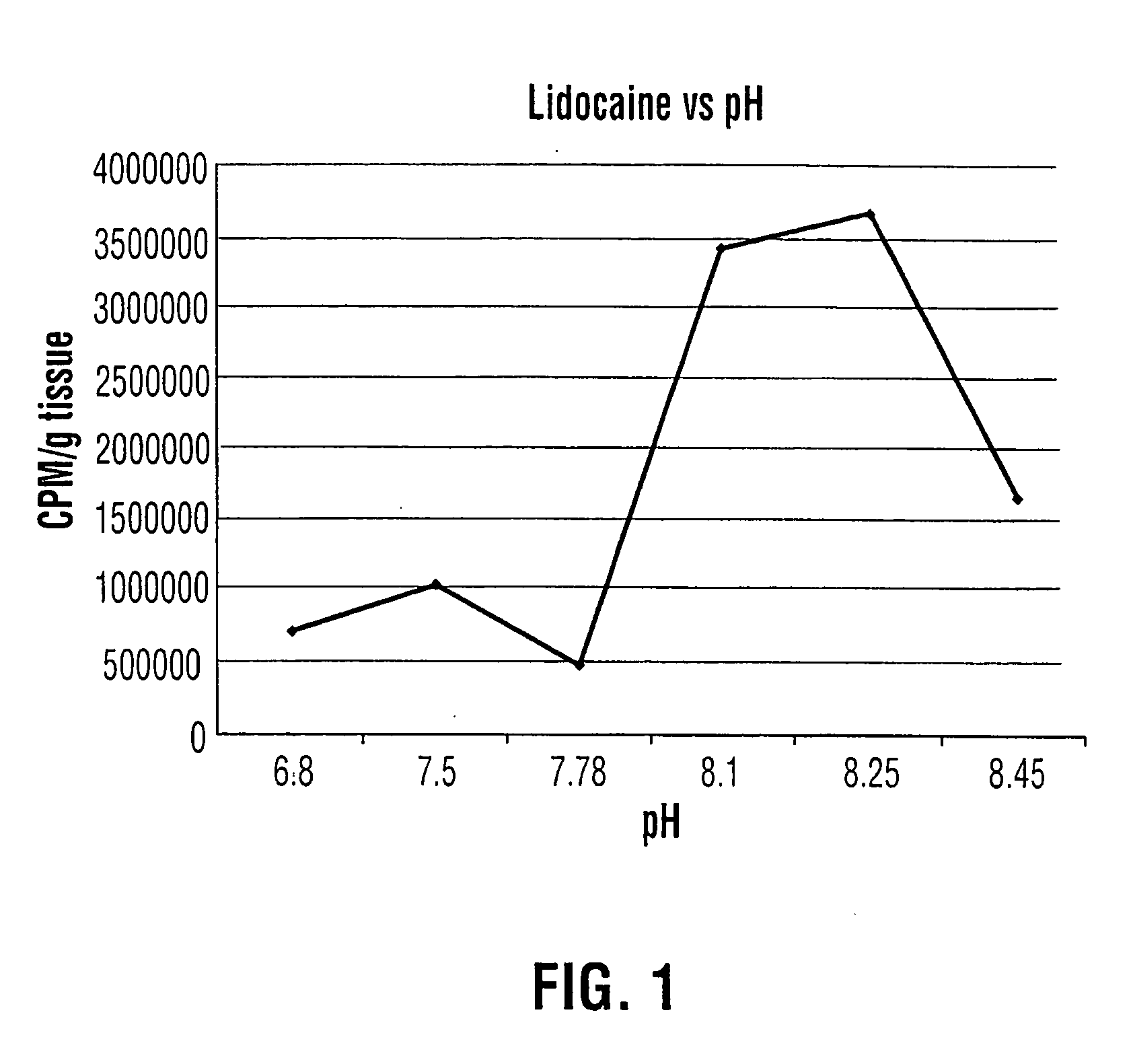Topical anesthesia of the urinary bladder
a topical anesthesia and urinary bladder technology, applied in the field of topical anesthesia of the urinary bladder, can solve the problems of low absorption rate of lidocaine, so as to reduce the concentration of lidocaine and slow down the absorption rate of urothelial membran
- Summary
- Abstract
- Description
- Claims
- Application Information
AI Technical Summary
Benefits of technology
Problems solved by technology
Method used
Image
Examples
example 2
[0040] Purpose: To determine the effect of alkalinization of intravesical lidocaine on absorption in healthy volunteers.
[0041] Methods: 12 ASA I-II healthy adult volunteers aged 18-50 years were recruited.
[0042] An in-out transurethral urinary catheter was passed up the urethra. The residual urine was drained and 5% (spinal) lidocaine was administered to three groups of four volunteers in increasing doses of 4 mg / kg, 5 mg / kg, or 6 mg / kg. This was then followed by 20 ml of 8.4% sodium bicarbonate solution after which the catheter removed. The subjects were asked to empty their bladders after one hour. Blood samples for lidocaine assay were taken at 15, 30, 60, 90, 120 and 180 minutes. The volunteers were asked to describe any side-effects felt during the three-hour observation period.
[0043] Results: In all volunteer groups, the lidocaine blood level peaked within 30 to 60 minutes of instillation. (FIG. 3) The mean peak concentration at 30 minutes was 1.06 μg / ml. The highest peak c...
PUM
| Property | Measurement | Unit |
|---|---|---|
| Fraction | aaaaa | aaaaa |
| Fraction | aaaaa | aaaaa |
| Fraction | aaaaa | aaaaa |
Abstract
Description
Claims
Application Information
 Login to View More
Login to View More - R&D
- Intellectual Property
- Life Sciences
- Materials
- Tech Scout
- Unparalleled Data Quality
- Higher Quality Content
- 60% Fewer Hallucinations
Browse by: Latest US Patents, China's latest patents, Technical Efficacy Thesaurus, Application Domain, Technology Topic, Popular Technical Reports.
© 2025 PatSnap. All rights reserved.Legal|Privacy policy|Modern Slavery Act Transparency Statement|Sitemap|About US| Contact US: help@patsnap.com



